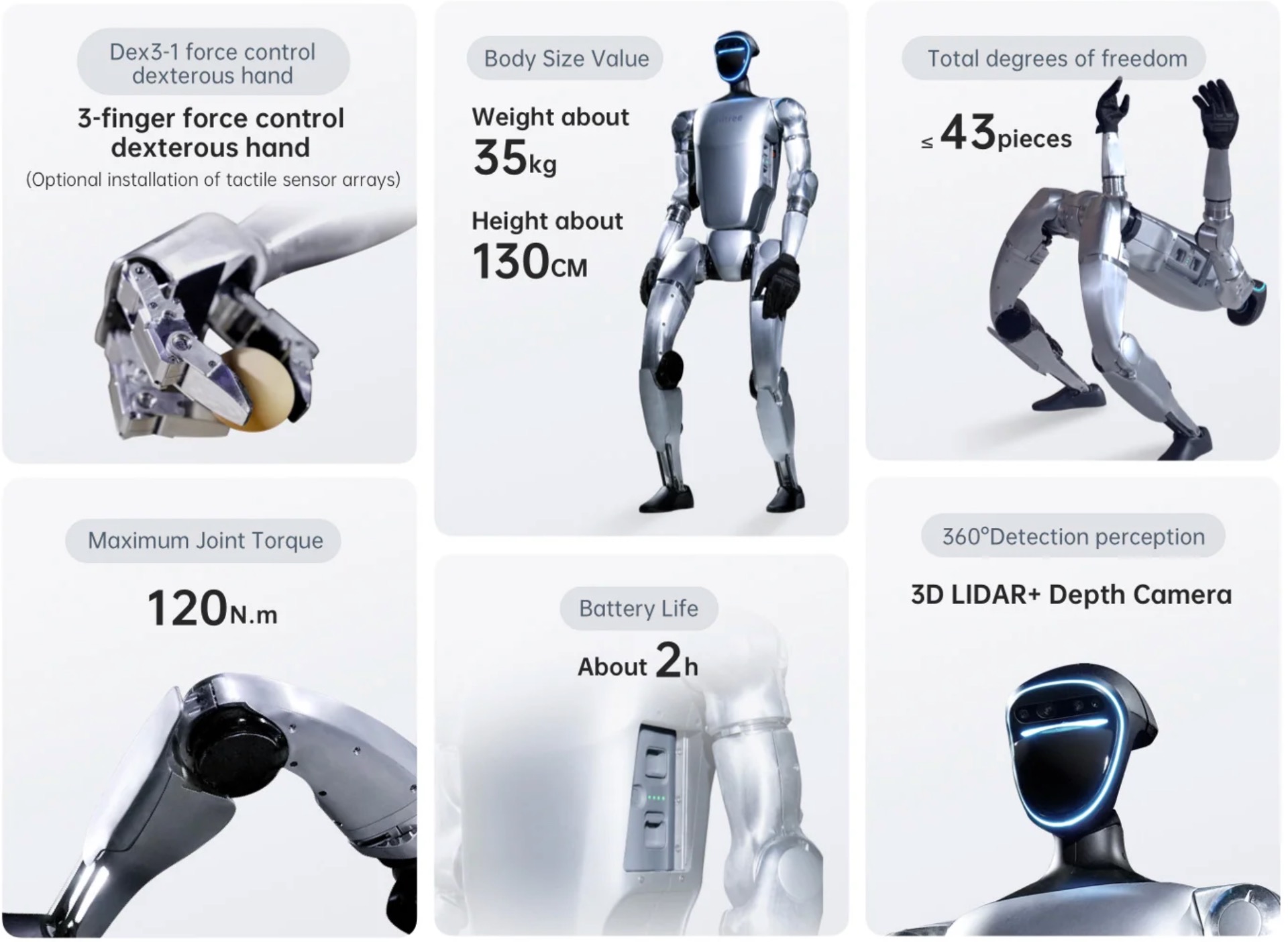Humanoid Robot in Mass Production
Unitree Robotics has introduced the mass-producible version of its G1 humanoid robot, which, with its price tag of approximately $16,000, opens up a market segment previously inaccessible to many. The G1 robot offers exciting opportunities not only for researchers and businesses but also for robotics enthusiasts.

Its advanced mobility, sophisticated vision systems, and three-fingered hands make it a particularly interesting option in the growing humanoid robot market. Below, we take a detailed look at the G1's features and explore its potential future role in robotics development.
G1 Robot Technical Specifications
The Unitree G1 robot stands 1.32 meters (approx. 4 ft 4 in) tall and weighs 35 kg (approx. 77 lbs), making it relatively compact. It features 23 degrees of freedom (DoF), enabling complex movements like jumping, rotating, and stair climbing. The robot can walk at a maximum speed of 2 meters per second (approx. 4.5 mph), a notable performance in its category.
The G1's vision system includes the Intel RealSense D435 depth camera and the Livox MID-360 lidar system, enabling accurate environment perception and navigation. This is crucial for tasks requiring the robot to navigate complex environments and avoid obstacles.
The robot's hands consist of three fingers capable of fine manipulation, such as grasping small objects. For voice control, noise-canceling microphones are integrated. For communication, it also includes a 5W stereo speaker, enabling audio responses.
Unitree is a Chinese robotics company founded in 2016. It previously specialized primarily in the development and manufacturing of quadrupedal robots for various applications such as research, reconnaissance, and rescue. Unitree's robots are capable of traversing diverse terrains, including steep slopes and uneven surfaces. The company has developed several models, like the A1, A1 Mini, and Go1. Unitree robots are sold in numerous countries, including China, the United States, and Europe. The company aims to make robotics accessible to mainstream users through applications in areas like hobbies, sports, and even household tasks.
Price and Availability
The G1 robot is priced at just $16,000, marking a significant price drop in the humanoid robot market. This price point is particularly striking compared to Unitree's previous H1 model, which was reportedly 90% more expensive. This competitive pricing makes advanced robotics technology more accessible to a wider audience, including research institutions, companies, and even individual robotics enthusiasts.
By comparison, the Spot robot developed by Boston Dynamics was priced at $74,500 in 2020, far exceeding the G1's cost. Unitree aims to make advanced technology more accessible, thereby capturing a significant share of the growing robotics market.

Use Cases and Limitations
Currently, the G1 is primarily intended for research and development purposes, and not designed for everyday consumer tasks like cooking or housework. The robot's learning capabilities are powered by the Unitree Robot Unified Large Model (UnifoLM), enabling skill acquisition through imitation and reinforcement learning. This makes it particularly appealing to those looking to test or develop robotic automation.
Challenges and Future Opportunities
Although the G1 is positioned for mass production, its precise manufacturing status is not yet entirely clear. Engineers have reportedly been refining the robot since its debut in May to meet mass production requirements, including improvements to its appearance and performance. Meanwhile, China aims to mass-produce advanced humanoid robots by 2025, and Unitree could become a key player in this initiative.
The rapid development of automation and robotics opens up new opportunities in research and industry, but technological and economic obstacles still need to be overcome. However, the emergence of the Unitree G1 and similar robots indicates that we are moving closer to these technologies becoming widely accessible.